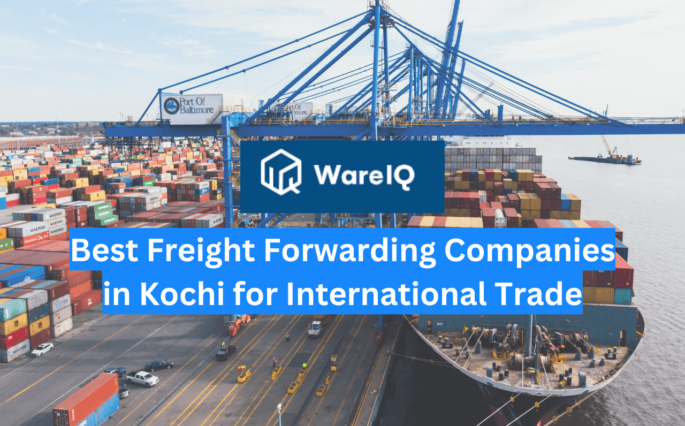Unlock A1 Success: Shipping Documents for Seamless Imports & Exports


In the dynamic realm of international commerce, navigating global trade demands a nuanced understanding of intricate processes, with shipping documents emerging as pivotal orchestrators. As the lifeblood of the modern economy, global trade connects businesses across borders through an expansive network of paperwork—shipping documents. This introduction underscores the complexity, significance, and interconnected nature of international trade, emphasising the crucial role that shipping documents, especially those tailored for export, play in ensuring the seamless movement of goods.
- Unravelling the Core Functions of Shipping Documents
- Unlocking the Arsenal of Export Documents
- Strategic Insights into Import Documentation
- Exploring Digital Innovations in Shipping Documents
- Conclusion: Harmony in Global Trade Through Mastery of Shipping Documents
- FAQ on Shipping Documents in Global Trade
- Why are shipping documents essential in global trade?
- What is the role of a commercial invoice in an export transaction?
- Why is a certificate of origin necessary for exported goods?
- What information does a bill of lading (BOL) contain?
- When is an export license required, and why?
- What role does an import license play in the importing process?
- How can businesses ensure accurate customs clearance with shipping documents?
Unravelling the Core Functions of Shipping Documents
To grasp the essence of global trade, one must delve into the multifaceted functions of shipping documents. These shipping documents for exports, far beyond mere paperwork, form the bedrock of the entire international trade ecosystem. Serving as communicative tools, they foster clarity among stakeholders and act as guardians of compliance, ensuring adherence to legal and regulatory frameworks. Shipping documents, particularly those designed for export, provide a transparent and accountable framework, serving as historical records that facilitate smooth operations and dispute resolution.
Unlocking the Arsenal of Export Documents
In the landscape of exporting goods globally, businesses must equip themselves with a distinct set of essential export documents, forming a powerful arsenal. Specially tailored for export, these documents facilitate the seamless movement of goods across borders. The commercial invoice takes centre stage, providing a detailed ledger of the value, quantity, and terms of sale of the shipped goods. Accompanied by the packing list, a meticulous inventory aiding customs inspections and efficient unpacking, it sets the stage for smooth transactions. The bill of lading, issued by the carrier, acts as a receipt and document of title, while the certificate of origin verifies the country of origin for customs clearance. Additionally, certain goods necessitate an export license, a critical document ensuring compliance with regulations.
Strategic Insights into Import Documentation
As businesses venture into importing goods, a strategic understanding of crucial import documents becomes paramount. The import journey involves a meticulous process guided by specific documentation. An import license, tailored to the nature of goods, serves as the gateway, granting official permission to bring in particular products. Customs entry forms become the linchpin for declaring the value, origin, and classification of imported goods, ensuring a seamless customs clearance process. The arrival notice, sent by the carrier to the consignee, provides crucial information about the goods’ arrival, enabling timely arrangements for customs clearance and delivery. The bill of entry, issued by customs authorities, becomes a legal document indispensable for the release of goods from customs custody. Furthermore, the delivery order issued by the carrier holds the key to the release of goods to the consignee or their authorised representative.
Exploring Digital Innovations in Shipping Documents
In the age of digital transformation, the landscape of shipping documents is experiencing significant innovations. The integration of technology allows for the digitisation of paperwork, offering efficiency gains and improved accessibility. Electronic bills of lading, blockchain-based certificates of origin, and AI-powered document verification are transforming the traditional documentation processes. This section explores the evolving realm of digital innovations in shipping documents, highlighting how businesses can leverage these advancements to enhance the speed, accuracy, and security of global trade operations.
Conclusion: Harmony in Global Trade Through Mastery of Shipping Documents
In the intricate dance of global trade, empowerment stems from mastering shipping documents. As the engines of the global economy continue to roar, the importance of these documents remains unwavering. Whether facilitating exports or guiding imports, shipping documents harmonise the diverse elements of international trade. From fostering transparency and efficiency to ensuring compliance and trust, these documents are the linchpin of successful global trade operations.
FAQ on Shipping Documents in Global Trade
Why are shipping documents essential in global trade?
Shipping documents are indispensable in global trade as they facilitate communication, ensure regulatory compliance, and provide a detailed record of the goods’ journey, fostering transparency, accountability, and efficiency in the supply chain.
What is the role of a commercial invoice in an export transaction?
The commercial invoice serves as a comprehensive record of shipped goods, playing a critical role in customs clearance financial transactions and as a legally binding agreement between the exporter and importer.
Why is a certificate of origin necessary for exported goods?
The certificate of origin is crucial, impacting customs clearance, tariff determination, and adherence to trade agreements by verifying the authenticity of the goods’ origin in international trade.
What information does a bill of lading (BOL) contain?
The bill of lading (BOL) issued by the carrier contains essential details such as shipper and consignee names, description of goods, origin, destination ports, and terms of shipment. It facilitates the release of goods at the destination port.
When is an export license required, and why?
An export license is required for goods under restrictions or security control, ensuring compliance with regulations and contributing to national security and international law adherence.
What role does an import license play in the importing process?
An import license is an official permission to import specific goods, ensuring compliance with destination country regulations, especially for goods with health and safety risks or subject to quotas.
How can businesses ensure accurate customs clearance with shipping documents?
Accurate customs clearance relies on the precise completion of customs forms, providing detailed and accurate information about the goods. Timely communication with customs authorities, staying informed about regulations, and collaboration with experienced professionals contribute to a smooth process.
Suggested: Decoding Shipping: Your Ultimate Guide to Shipping Companies and Logistics








